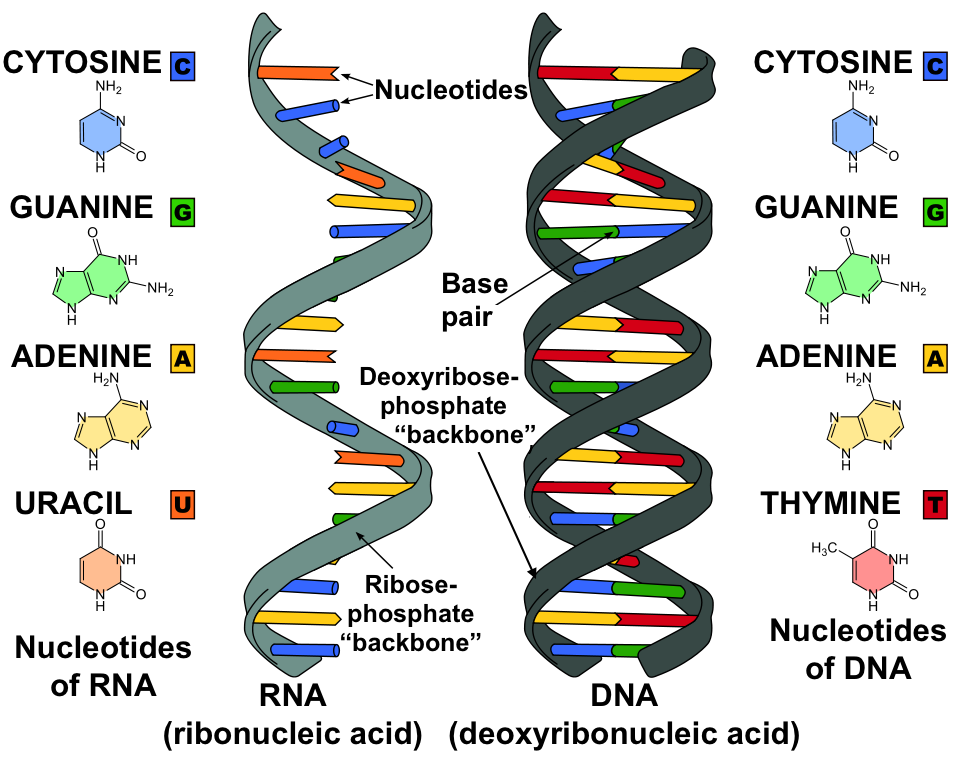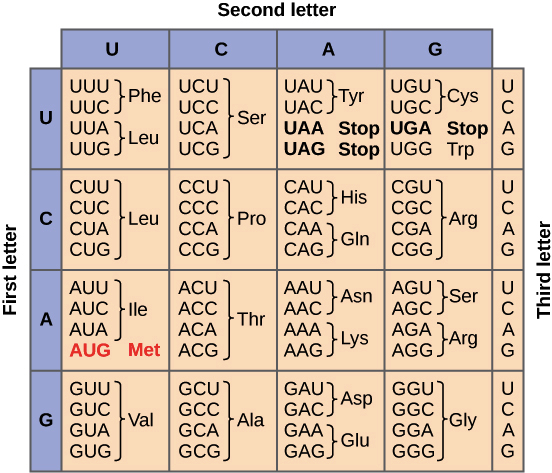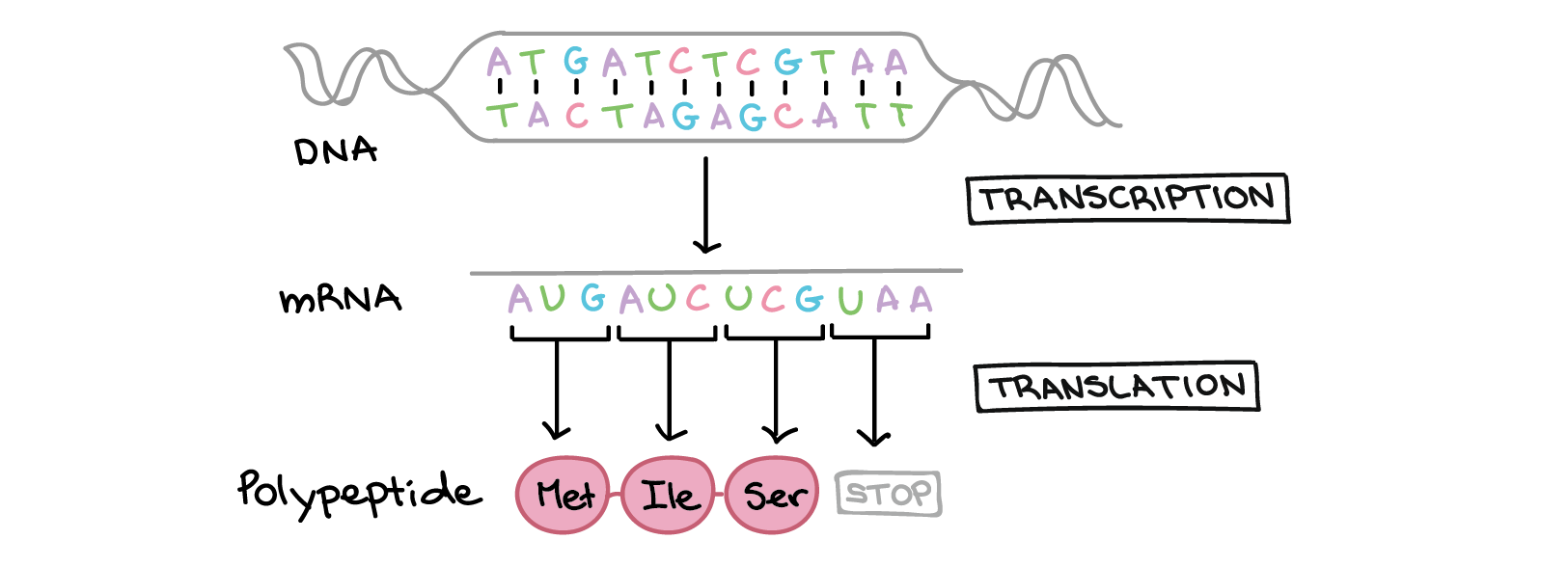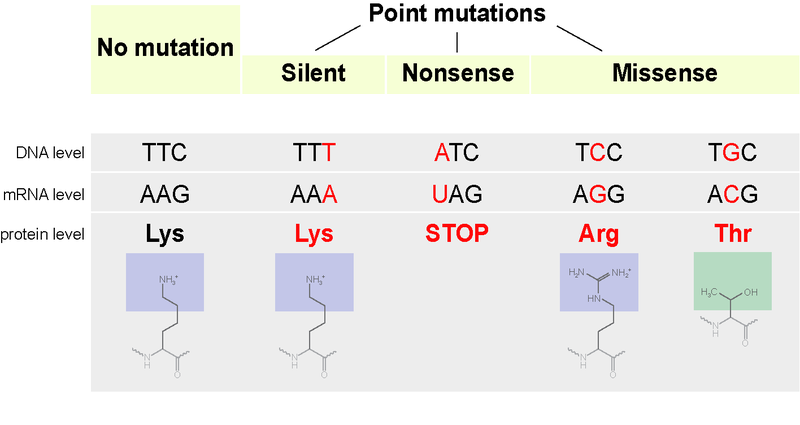A/L - Biology - Structure of RNA
Structure of RNA
DNA alone cannot account for the expression of genes. RNA is needed to help carry out the instructions in DNA.
Like DNA, RNA is made up of nucleotide consisting of a 5-carbon sugar ribose, a phosphate group, and a nitrogenous base. However, there are three main differences between DNA and RNA:
- RNA uses the sugar ribose instead of deoxyribose.
- RNA is generally single-stranded instead of double-stranded.
- RNA contains uracil in place of thymine.
These differences help enzymes in the cell to distinguish DNA from RNA.
Types of RNA
| Type | Role |
|---|---|
| Messenger RNA (mRNA) | Carries information from DNA in the nucleus to ribosomes in the cytoplasm |
| Ribosomal RNA (rRNA) | Structural component of ribosomes |
| Transfer RNA (tRNA) | Carries amino acids to the ribosome during translation to help build an amino acid chain |
Central dogma of biology
A gene that encodes a polypeptide is expressed in two steps. In this process, information flows from DNA right arrow RNA right arrow protein, a directional relationship known as the central dogma of molecular biology.
The genetic code
The first step in decoding genetic messages is transcription, during which a nucleotide sequence is copied from DNA to RNA. The next step is to join amino acids together to form a protein.
The order in which amino acids are joined together determine the shape, properties, and function of a protein.
The four bases of RNA form a language with just four nucleotide bases: adenine (A), cytosine (C), guanine (G), and uracil (U). The genetic code is read in three-base words called codons. Each codon corresponds to a single amino acid (or signals the starting and stopping points of a sequence).
Transcription and translation
In transcription, a DNA sequence is rewritten, or transcribed, into a similar RNA "alphabet." In eukaryotes, the RNA molecule must undergo processing to become a mature messenger RNA (mRNA).
In translation, the sequence of the mRNA is decoded to specify the amino acid sequence of a polypeptide. The name translation reflects that the nucleotide sequence of the mRNA sequence must be translated into the completely different "language" of amino acids.
Mutations
Sometimes cells make mistakes in copying their genetic information, causing mutations. Mutations can be irrelevant, or they effect the way proteins are made and genes are expressed.
Substitutions
A substitution changes a single base pair by replacing one base for another.
There are three kinds of substitution mutations:
- Silent mutations do not affect the sequence of amino acids during translation.
- Nonsense mutations result in a stop codon where an amino acid should be, causing translation to stop prematurely.
- Missense mutations change the amino acid specified by a codon.
Insertions and deletions
An insertion occurs when one or more bases are added to a DNA sequence. A deletion occurs when one or more bases are removed from a DNA sequence.
Because the genetic code is read in codons (three bases at a time), inserting or deleting bases may change the "reading frame" of the sequence. These types of mutations are called frameshift mutations.
As this example illustrates, a frameshift mutation changes how nucleotides are interpreted as codons beyond the point of the mutation, and this, in turn, may change the amino acid sequence.
Common mistakes and misconceptions
- Amino acids are not made during protein synthesis. Some students think that the purpose of protein synthesis is to create amino acids. However, amino acids are not being made during translation, they are being used as building blocks to make proteins.
- Mutations do not always have drastic or negative effects. Often people hear the term "mutation" in the media and understand it to mean that a person will have a disease or disfigurement. Mutations are the source of genetic variety, so although some mutations are harmful, most are unnoticeable, and many are even good!
- Insertions and deletions that are multiples of three nucleotides will not cause frameshift mutations. Rather, one or more amino acids will just be added to or deleted from the protein. Insertions and deletions that are not multiples of three nucleotides, however, can dramatically alter the amino acid sequence of the protein.













No comments